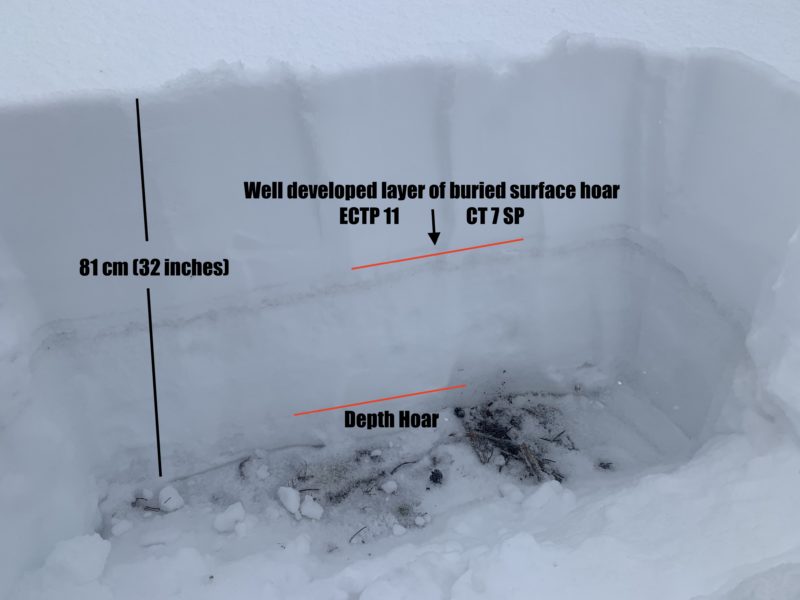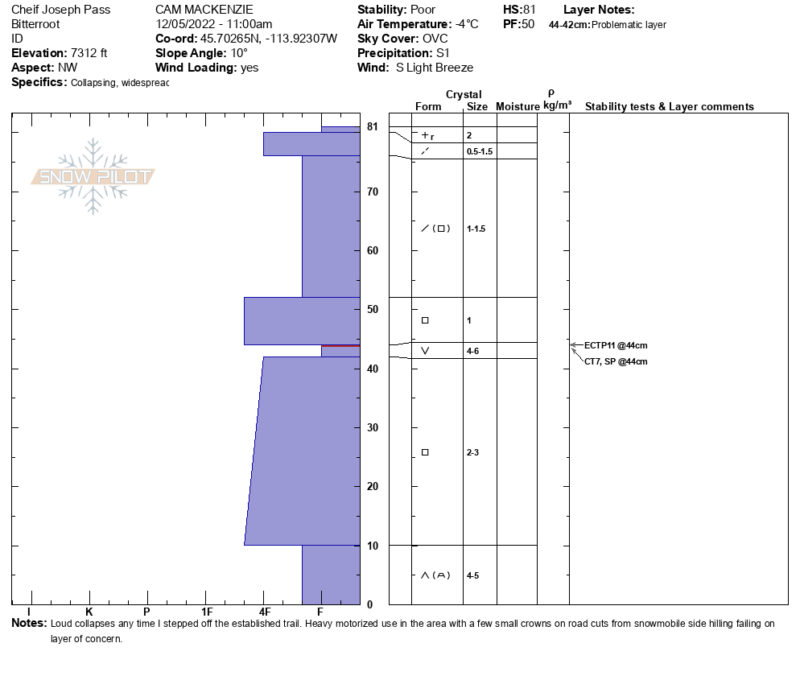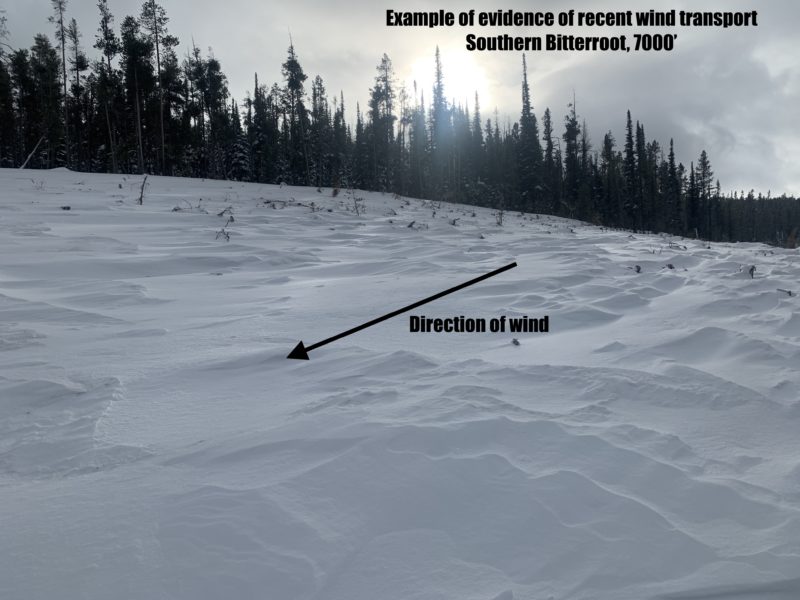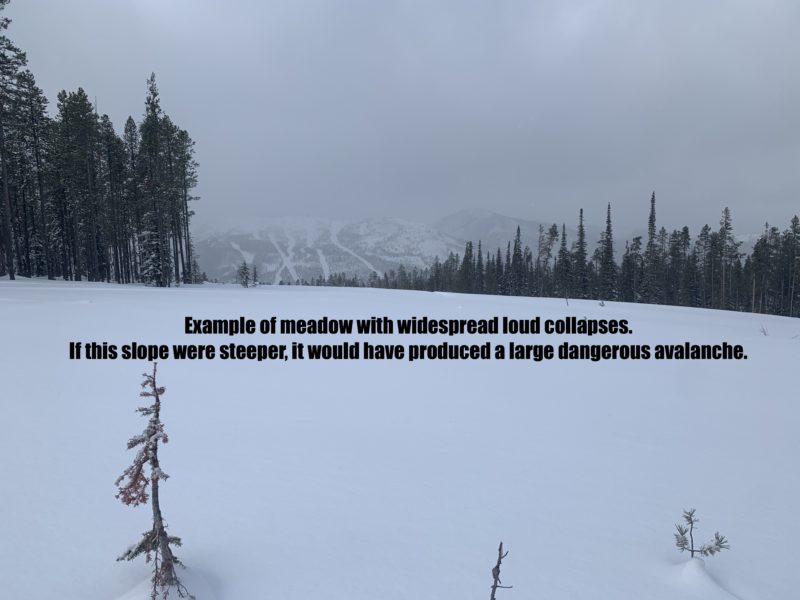Basic Information
Observation Details
Observation Date:
December 5, 2022Submitted:
December 5, 2022Observer:
WCMAC - Cam MackenzieZone or Region:
Southern BitterrootsLocation:
Chief Joseph Pass, Continental DivideSigns of Unstable Snow
Recent Avalanches?
YesCracking?
None ExperiencedCollapsing?
WidespreadSnow Stability
Stability Rating:
PoorConfidence in Rating:
ModerateStability Trend:
SteadyBottom Line
The buried layer of surface hoar from previous field days was found in the area. Basal faceting has also progressed to full depth hoar cups. Lots of recent snow transport from weekend winds. In areas, this has built up a significant wind slab.
Media




Advanced Information
Weather Summary
Cloud Cover:
OvercastTemperature:
24fWind:
Light , SWLight snow throughout the field day about 1cm/hr. Evidence of strong south winds and recent transport onto northern aspects.
Avalanche Observations
Heavy snowmobile use in the area over the weekend. Multiple small avalanches triggered above road cuts by motorized travel failing on buried surface hoar layer.
Snowpack Observations
Travel today was from Chief Joseph Pass north on the Continental Divide Trail.
I found poor snowpack structure in multiple locations, all between 7000' and 7500' on the northern aspects. The primary layer of concern is the buried layer of surface hoar found elsewhere in the Bitterroot range on previous field days. I found it especially well preserved and reactive today compared to previous field days in the Bitterroot.
My second layer of concern is depth hoar. The basal facets from the October snow have progressed into fully developed and cupped depth hoar.
Snowpit tests were reactive and showed high propagation on the buried layer of surface hoar. I did not get results on the depth hoar, however, I suspect that this is because of how easy it was to initiate a test failure on the surface hoar. In areas without the surface hoar, failure on the depth hoar is likely.
Looking at the snowpack in the Southern Bitterroot in terms of the avalanche stability wheel, all three components are pointing to a very weak snowpack. Our structure is poor with multiple persistent weak layers. We have a connected and cohesive slab above the weak layers.
Finally, when a failure is initiated, it is showing high propagation propensity.
These issues won't disappear quickly and we will continue to track these across the forecast zone.